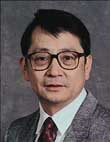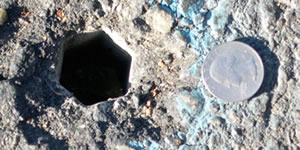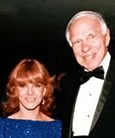| |
| Today
8
a.m.
Earth Sciences
Symposium on Underground Injection Science and Technology
Bldg. 50 Auditorium
10
a.m.
Earth Sciences Division
OpenOffice on the Mac Platform
Louis Suarez-Potts
Bldg. 70A-3377
10:30
a.m.
Center for Beam Physics
Measuring the Electrical Conductivity of a Single, Warm
Dense Matter State
Andrew Ng, LLNL
Bldg. 71-264
11:30
a.m. — 1:30 p.m.
Costco Membership Drive
Bldg. 937 Lobby
1
p.m.
NERSC
A Proposed Standard for Matrix Metadata With a View Towards
a Self-Adapting Large-scale Solver Architecture
Victor Eijkhout
Bldg. 50A-5132
4
p.m.
College of Chemistry
Breaking Bonds with Low-Coordinate Iron: Chemistry Inspired
by Nitrogenase
Patrick Holland, U. of Rochester
120 Latimer Hall
Monday
9 a.m.
OSTP
Research Business Models Workshop Alignment of Funding
Mechanisms With Scientific Opportunities
Bldg. 50 Auditorium
EHS 280
Laser Safety
Bldg. 51-201
4 p.m.
Mechanical Engineering Dept.
Mechanics of DNA packing and Ejection in Viruses
Rob Phillips, CIT
3110 Etcheverry Hall
4:30 p.m.
Physics Dept.
Cavity Quantum Electrodynamics With Single Atoms
Herbert Walther, Max-Planck Institute
1 LeConte Hall
|
|
| |
 |
| |
Origins: Baked Salmon with Sundried
Tomato Tapenade
The Fresh Grille: Philly Cheese Steak
Sandwich with Onion Rings
Menutainment: Viva La Burrito! Chicken or Pork
Dinner: Choice of Roasted Chipotle Chicken; Flank Steak
with Green Peppercorn Sauce & Steak Fries; or Blue Nosed
Bass with Roma Tomato Demi Sauce & Sauteed Shrimp
|
|
B'fast: |
6:30
a.m. - 9:30 a.m. |
| Lunch: |
11
a.m. - 1:30 p.m. |
| Dinner: |
5
- 7 p.m. |
Full
Menu
|
|
|
|
 |
 |
| 
Amber
Waves of Grain
on a Mission to Mars
|
|
 |
|
|
|
Chang |
|
|
|
Mars
came nearer to Earth this year than it has in more than
50,000 years, but a new technology could bring it closer
still. Scientists have developed a fully sustainable
disposal system to deal with waste on long-range space
flights using a simple byproduct of wheat. Wheat grass,
an inedible part of the wheat plant, can be used to
reclaim pollutants produced from burning waste on a
spaceship, according to Shih-Ger Chang and other
Environmental Energy Technologies researchers from Berkeley
Lab and NASA. Full
story.

|
|
|

Building
With
Green in Mind
By
Amy Nolan
Lanny Cope
says he's no tree hugger, but he's crisscrossing the
state preaching the merits of green building. The Knoxville
architect became a convert to the green building movement
when his firm won the job of designing Oak Ridge National
Laboratory’s Research Support Center. A report
released this month by the Capital E group, Berkeley
Lab, and some California state agencies concluded
that financial benefits of green design are between
$50 and $70 per square foot in a LEED building. Financial
benefits came from lower energy, waste and water costs;
lower environmental and emissions costs; lower operating
and maintenance costs; and increased productivity and
health.
Full story.

|
|
 |
| 
What’s
With All The Holes in the Road?
Several
‘Today at Berkeley Lab’ readers have inquired
about the tiny holes drilled into roads around the Lab.
According to Michael Dong, chief mechanical engineer,
the holes are part of the Sitewide Water Project, which
involves the installation of a cathodic protection system
on all the Lab's water mains. The system uses sacrificial
anodes — to prevent the pipes from corroding due
to stray electrical currents — that are connected
to the pipes by electrical wires. The holes were created
to test the cathodic protection system to ensure stray
electrical currents can flow between the pipes and the
sacrificial anodes. The holes will be filled soon.
 |
|
 |
 |
|
Seaborg
Photo Display
Back and Secure
|
|
 |
|
|
|
Ann-Margret
and Seaborg |
|
|
|
An
array of photos and other memorabilia commemorating
the life and times of the late Berkeley Lab nobelist
Glenn T. Seaborg has returned to the Building
70A lobby, just down the hall from Seaborg’s
last office. New locks have been installed on
the cabinets, and designer Marilee Bailey
of the Technical and Electronic Information Department
has reset the images – including (above)
a photo of Seaborg with actress Ann-Margret when
both received the Great Swedish Heritage Award
in 1984.
|
|
|
 |
Time
To
Turn Back
the Clocks
If
employees want to make sure they aren’t
late to work on Monday, then they must turn their
clocks back one hour before going to bed on Saturday
evening. Why? Daylight savings time is over, and
the country reverts back to standard time. Did
you know that standard time was instituted in
the U.S. by the railroads in 1883? Before then,
the time of day was a local matter, and most cities
and towns used clocks on a church steeple or in
a jeweler's window to track the hours.
ASD
Training
Open to Everyone
The
ASD Academy has room available in three of its
upcoming training courses for any employee who
is interested in participating: ‘Writing
Advantage,’ from 8 a.m. to 4:30 p.m. on
Monday, and ‘Managing The Stress of Change,’
from 11 a.m. to 12:30 p.m. on Nov. 17. To sign
up, contact Linda Matyas at x5345 or
[email protected].

|
|
|
|
 |
| |
|

